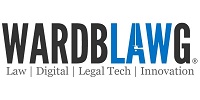 In today’s fast-paced business world, legal departments face increasing demand for their services, says our newest legal technology contributor on our blawg. And with limited resources and growing types of legal support required, legal teams are under immense pressure to meet demand while maintaining efficiency and cost reduction. The lack of prioritization from IT and poor business perception of legal often exacerbate these challenges, leaving legal teams struggling to demonstrate their value and justify additional resources. In this new legal tech blog post we look at both Legal Service Request Management (LSRM) and the Legal Front Door together with the benefits to be gained for law firms in considering and adopting new related concepts, processes and technology.
In today’s fast-paced business world, legal departments face increasing demand for their services, says our newest legal technology contributor on our blawg. And with limited resources and growing types of legal support required, legal teams are under immense pressure to meet demand while maintaining efficiency and cost reduction. The lack of prioritization from IT and poor business perception of legal often exacerbate these challenges, leaving legal teams struggling to demonstrate their value and justify additional resources. In this new legal tech blog post we look at both Legal Service Request Management (LSRM) and the Legal Front Door together with the benefits to be gained for law firms in considering and adopting new related concepts, processes and technology.
The Resulting Challenges
The pressure for efficiency and cost reduction often leads to flattened headcounts within legal departments, causing lawyers to work in overdrive to keep up with demands, putting them at risk of burnout. Additionally, the opaqueness of legal requests contributes to misunderstandings between legal and the business, leading to dissatisfaction on both ends.
 What is Legal Service Request Management?
What is Legal Service Request Management?
Legal service request management is the process of handling and fulfilling service requests from customers or end-users. This process typically involves capturing, tracking and resolving requests for services or assistance. LSRM involves how the business raises requests to legal and how those requests are managed.
The Current State of Legal Service Request Management
Unfortunately, most legal teams still lack robust legal intake processes. A survey conducted for legal operations professionals revealed that 47% of legal teams handle their requests through ad hoc, unorganized channels, resulting in inefficiencies and bottlenecks. Only 21% of teams use automated triage systems, while others employ various forms of manual triaging.
The Benefits of Implementing LSRM
Implementing LSRM offers numerous benefits for both the business and legal teams. For the business, it provides a clearer and streamlined experience when engaging with legal, faster turnaround times for simple and complex requests, and increased visibility over request statuses and history. For legal teams, LSRM allows more focus on high-value tasks, provides lawyers with more capacity through automated triaging, and empowers them with visibility and reporting on requests and workflows.
What is the Legal Front Door?
The legal front door is the metaphorical entry that business users use to interact with the legal team. It is the interface business users use when raising legal requests. It’s a centralized entry point for all legal service requests, enabling employees to submit requests, track their progress and access legal services and information seamlessly. Key features of the legal front door include:
- User-Friendly Interface: A simple and intuitive interface that lets business users submit their requests in a straightforward way that reduces friction and promotes positive engagement with the legal department.
- Service Catalogue: A directory of readily available legal services and options, guiding the request intake and triage process based on already defined criteria.
- Self-Service Knowledge & Advice: Self-help tools and knowledge bases, allowing business users to access legal information and resources on their own, reducing the need for manual intervention and improving response times for simple requests.
A legal front door can also include document automation, approval workflows and self-service advice, which all contribute to improving the legal service request management process.
How Legal Service Request Management & The Legal Front Door Work Together
The legal front door acts as an entry point for all legal service requests, providing a centralized and standardized way for the business to engage with the legal department. It determines how each request is routed and triaged based on its type, complexity and other relevant factors.
The integration of Legal Front Door and Legal Service Request Management streamlines the entire legal service request process, ensuring efficient intake and resolution of requests. It allows legal departments to optimize their resources, reduce manual intervention and improve response times, ultimately leading to enhanced client satisfaction and increased efficiency in legal operations.
Legal departments must embrace modern solutions…
In the quest for efficiency and cost reduction, legal departments must embrace modern solutions. By optimizing request intake and resolution processes, legal teams can effectively meet business demands, demonstrate their value, and elevate their role as strategic partners within the organization. With LSRM, legal departments can unlock their full potential and contribute significantly to the success of the business.
And from our contributor you can also see their legal blog post “How Artificial Intelligence is Revolutionizing & Transforming the Legal Technology Landscape” here. And see also the updated best legal case management section on our website here.
Legal front door image courtesy of DALL-E 2


